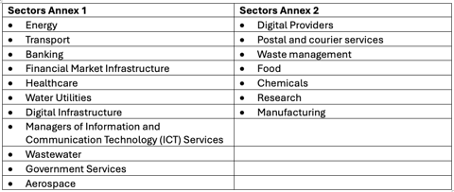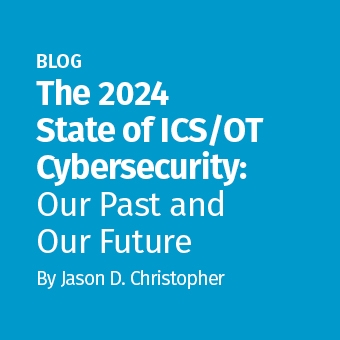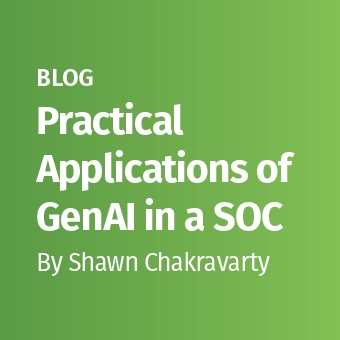This is Part 7 of a multi-blog series on the new NIS2 Directive. Explore the complete series:
Aligning with NIS2 and implementing tailored ICS controls is imperative to improving OT systems' cybersecurity resilience and ensuring critical infrastructure safety, reliability, and cyber protection across the European Union. SANS Certified Instructor, Dean Parsons, advocates for leveraging the SANS Five ICS Cybersecurity Critical Controls, prioritizing threat-based defenses tailored to OT environments. He stresses the importance of understanding the fundamental differences between IT and ICS/OT systems, emphasizing the need for nuanced cybersecurity approaches tailored to OT environments.
The Network and Information Security (NIS) Directive and its successor, NIS2, both aim to enhance cybersecurity across critical infrastructure sectors, including industrial control systems (ICS) and operational technology (OT) networks. However, according to Dean Parsons, SANS Certified Instructor of ICS515, co-author of the new SANS ICS418 course, and CEO and Principal Consultant of ICS Defense Force, both directives differ in several key areas, such as scope, risk management, cross-border cooperation, penalties, and enforcement. “NIS initially concentrates on essential service operators within sectors like energy, transportation, banking, and healthcare. Conversely, NIS2 expands its scope to include a broader range of digital service providers (DSPs) and online platforms. This extension encompasses organizations providing OT-related services, thereby extending cybersecurity obligations to a wider array of entities operating OT systems,” explains Parsons.
NIS2 Enhancements
Regarding risk management, NIS2 builds upon its predecessor by introducing additional risk management requirements and incident reporting obligations for DSPs and online platforms. “This includes OT-related service providers who must adhere to stringent risk management frameworks and incident reporting obligations to ensure timely and transparent communication in the event of cybersecurity incidents.” NIS2 further strengthens cross-border cooperation by establishing a European Cybersecurity Competence Center and a Network of National Coordination Centers. “These entities facilitate collaboration, information exchange, and joint responses to cyber threats, benefiting OT networks operating across multiple EU countries,” says Parsons. Also, NIS2 maintains the enforcement requirements of NIS1 while adding measures to ensure effective compliance monitoring and enforcement across regulated entities. “This may lead to increased accountability for organizations running OT systems, as they are subject to penalties for non-compliance with NIS2 requirements,” warns Parsons.
OT Cyber Threats
Current threats targeting ICS and OT environments encompass various cyber risks, including malware and ransomware, supply chain attacks, nation-state espionage, insider threats, and zero-day exploits. These threats pose significant challenges to the security and integrity of OT systems, potentially leading to operational disruptions, data breaches, and physical damage. In this context, the NIS2 plays a crucial role in enhancing OT's cybersecurity posture, according to Parsons. “Given the threats towards ICS and OT, NIS2 should augment with the tactical implantation of specific ICS controls to defeat existing and new evolving ICS targeted threats, such as ‘Pipedream’.” Pipedream is a software framework for malicious code targeting programmable logic controllers (PLCs) and industrial control systems. The framework has also been described as a ‘Swiss Army knife’ for hacking. “By expanding its scope to include a broader range of digital service providers and online platforms, NIS2 extends cybersecurity obligations to organizations providing OT-related services. Furthermore, NIS2 introduces additional risk management requirements and incident reporting obligations, enabling OT organizations to effectively identify, assess, and mitigate cybersecurity risks.”
OT Compliance Challenges
OT operators may encounter several unique challenges in complying with the NIS2 directive, as highlighted by Parsons. One major challenge stems from the inherent differences between IT and ICS/OT environments. “These differences necessitate distinct cybersecurity approaches, controls, and risk management strategies tailored to the specific characteristics of OT systems,” says Parsons. "It is very clear that aligning with NIS2 directly works to improve the state of both IT and ICS/OT environments." Additionally, implementing controls designed for IT systems may introduce new risks or prove ineffective in OT environments, underscoring the need for a nuanced understanding of cybersecurity requirements. For example, while encryption is effective in IT networks, its implementation in OT environments may present challenges and provide a lower return on investment due to differing risk surfaces. Moreover, OT operators must navigate complex regulatory landscapes while ensuring safety, reliability, and control system integrity. To address these challenges, Parsons advocates for implementing the SANS Five ICS Cybersecurity Critical Controls, which are tailored to combat and defend against existing ICS/OT-specific threats. “These controls include ICS-specific incident response, defensible control system network architecture, network visibility and monitoring, secure remote access, and risk-based vulnerability management. By proactively addressing these challenges and implementing tailored cybersecurity measures, OT operators can enhance their compliance with the NIS2 directive and strengthen the resilience of critical infrastructure networks.”
Global NIS2 Impact
The NIS2 directive can potentially affect OT operators outside the EU, depending on certain factors. For instance, if an OT organization operates outside the EU but provides services within EU member states, it may fall under the jurisdiction of the NIS2 directive. “This is because NIS2 extends its scope to include a broader range of DSPs and online platforms, regardless of their geographical location,” says Parsons. “Similarly, if the headquarters of a digital service provider (including an OT organization) is located within the EU, that organization falls under the jurisdiction of the NIS2 directive. This means that even if an OT organization primarily operates outside the EU, it may still be subject to NIS2 regulations if its headquarters are based in an EU member state or if it offers services that are deemed essential for the functioning of critical infrastructure sectors within EU member states.”
Proactive NIS2 Compliance
Parsons emphasizes the critical importance of proactive measures for organizations to ensure compliance with the reporting requirements outlined in the NIS2 directive. He highlights the necessity of implementing ICS-specific controls, mainly focusing on ICS Network Visibility, stating, "An important ICS-specific control to ensure the capability to detect the threat and have data collection to log, respond, is the proactive measure of ICS Network Visibility." Parsons underscores the significance of continuous industrial network security monitoring using specialized tools and analysis capabilities to identify potential risks to control systems and operations. Additionally, he suggests that organizations can contribute to the SANS NIS2 Cybersecurity Directive Preparedness survey to gain insights into the challenges they face and receive practical recommendations for implementation. Parsons explains: "We are going to dive deep into the challenges organizations are facing and provide practical ways to action and prepare for implementation." Through participation in the survey, organizations can access valuable findings and recommendations published in white papers and webcasts, facilitating their efforts to comply with NIS2 requirements and enhance their cybersecurity preparedness.
10 Bullet Points from the NIS2 Regulation
- Policies on risk analysis and information system security
- Incident handling
- Business continuity, such as backup management and disaster recovery, and crisis management.
- Supply chain security, including security-related aspects concerning the relationships between each entity and its direct suppliers or service providers.
- Security in network and information systems acquisition, development and maintenance, including vulnerability handling and disclosure.
- Policies and procedures to assess the effectiveness of cybersecurity risk-management measures.
- Basic cyber hygiene practices and cybersecurity training.
- Policies and procedures regarding the use of cryptography and, where appropriate, encryption.
- Human resources security, access control policies and asset management.
- The use of multi-factor authentication or continuous authentication solutions, secured voice, video and text communications and secured emergency communication systems within the entity, where appropriate.
Which Organizations are Essential or Important?

Essential entities: Large organizations operating in a sector from Annex 1 of the NIS2 Directive
Key entities: Medium-sized organizations operating in an Annex 1 sector and medium and large organizations operating in an Annex 2 sector.
An organization is large based on the following criteria:
- a minimum of 250 employees, or
- an annual turnover of €50 million or more and a balance sheet total of €43 million or more.
An organization is medium-sized based on the following criteria:
- 50 or more employees, or
- an annual turnover and balance sheet total of €10 million or more.
In this series on NIS2, we highlight the new directive from different angles so that CISOs and their organizations can gain insight into how to deal with NIS2.
In the ever-evolving world of cybersecurity, staying compliant is key. With SANS, you have a partner in compliance, offering the latest courses and resources designed for NIS2 standards. Start navigating the compliance landscape today at www.sans.org/mlp/nis2.
As SANS maps out industry preparedness for the new EU Commission's NIS2 Directive, your insights are invaluable. Please take a moment to complete the NIS2 survey to contribute to our research. Your feedback will help us provide the guidance and resources needed for this and future directives.
Continue reading in Part 8 of our NIS2 Compliance series here.




